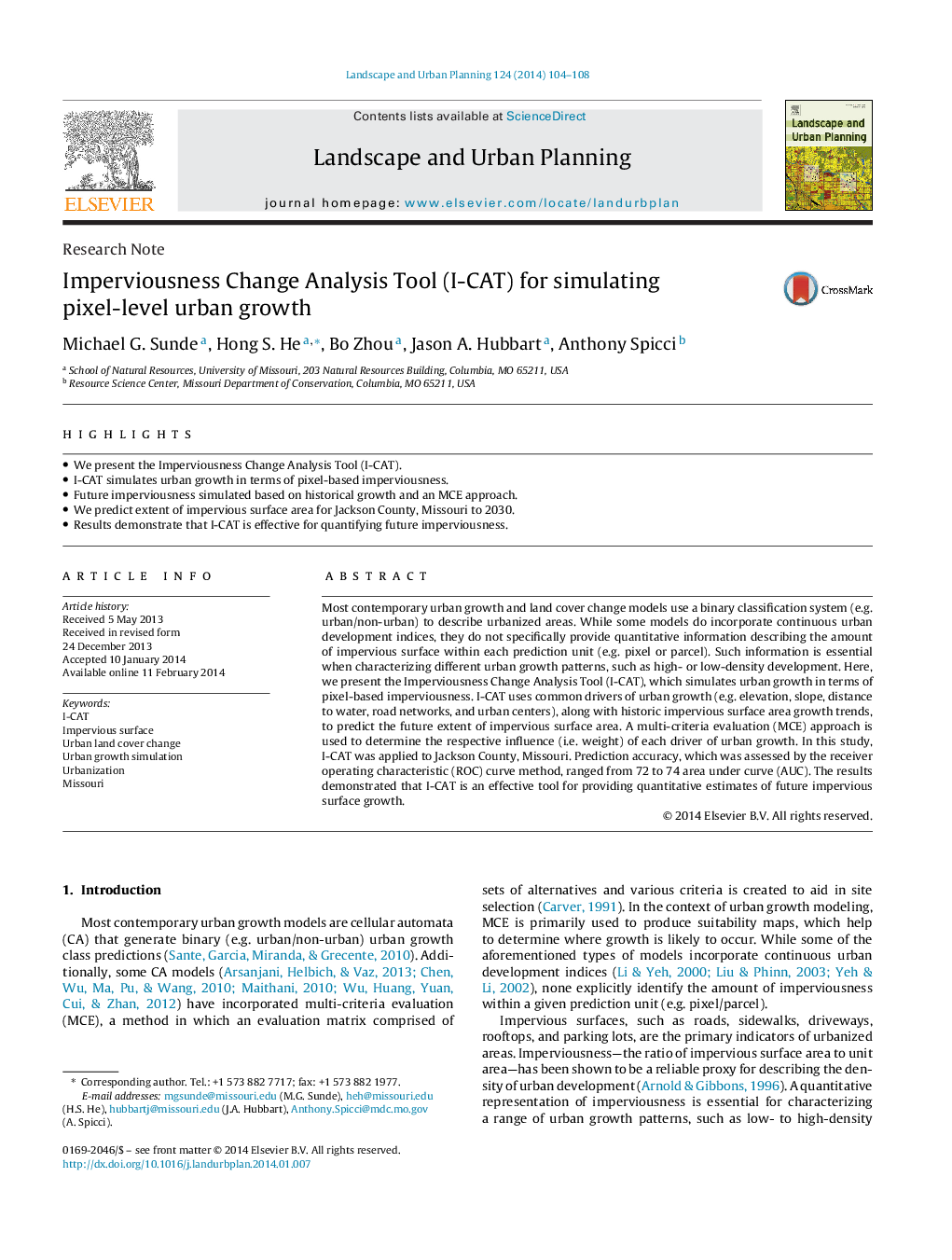| Article ID | Journal | Published Year | Pages | File Type |
|---|---|---|---|---|
| 1049321 | Landscape and Urban Planning | 2014 | 5 Pages |
•We present the Imperviousness Change Analysis Tool (I-CAT).•I-CAT simulates urban growth in terms of pixel-based imperviousness.•Future imperviousness simulated based on historical growth and an MCE approach.•We predict extent of impervious surface area for Jackson County, Missouri to 2030.•Results demonstrate that I-CAT is effective for quantifying future imperviousness.
Most contemporary urban growth and land cover change models use a binary classification system (e.g. urban/non-urban) to describe urbanized areas. While some models do incorporate continuous urban development indices, they do not specifically provide quantitative information describing the amount of impervious surface within each prediction unit (e.g. pixel or parcel). Such information is essential when characterizing different urban growth patterns, such as high- or low-density development. Here, we present the Imperviousness Change Analysis Tool (I-CAT), which simulates urban growth in terms of pixel-based imperviousness. I-CAT uses common drivers of urban growth (e.g. elevation, slope, distance to water, road networks, and urban centers), along with historic impervious surface area growth trends, to predict the future extent of impervious surface area. A multi-criteria evaluation (MCE) approach is used to determine the respective influence (i.e. weight) of each driver of urban growth. In this study, I-CAT was applied to Jackson County, Missouri. Prediction accuracy, which was assessed by the receiver operating characteristic (ROC) curve method, ranged from 72 to 74 area under curve (AUC). The results demonstrated that I-CAT is an effective tool for providing quantitative estimates of future impervious surface growth.
